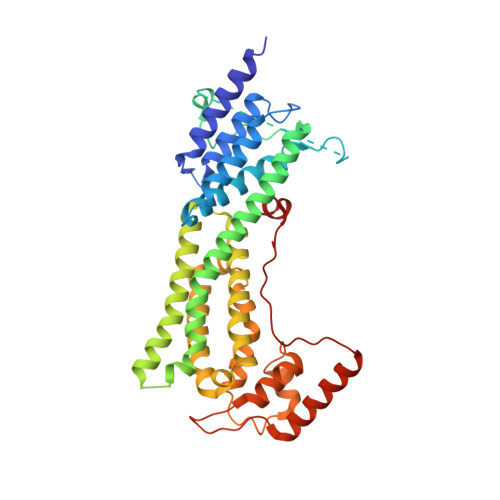Structure of the class XI myosin globular tail reveals evolutionary hallmarks for cargo recognition in plants.
Turowski, V.R., Ruiz, D.M., Nascimento, A.F.Z., Millan, C., Sammito, M.D., Juanhuix, J., Cremonesi, A.S., Uson, I., Giuseppe, P.O., Murakami, M.T.(2021) Acta Crystallogr D Struct Biol 77: 522-533
- PubMed: 33825712
- DOI: https://doi.org/10.1107/S2059798321001583
- Primary Citation of Related Structures:
7KFL - PubMed Abstract:
The plant-specific class XI myosins (MyoXIs) play key roles at the molecular, cellular and tissue levels, engaging diverse adaptor proteins to transport cargoes along actin filaments. To recognize their cargoes, MyoXIs have a C-terminal globular tail domain (GTD) that is evolutionarily related to those of class V myosins (MyoVs) from animals and fungi. Despite recent advances in understanding the functional roles played by MyoXI in plants, the structure of its GTD, and therefore the molecular determinants for cargo selectivity and recognition, remain elusive. In this study, the first crystal structure of a MyoXI GTD, that of MyoXI-K from Arabidopsis thaliana, was elucidated at 2.35 Å resolution using a low-identity and fragment-based phasing approach in ARCIMBOLDO_SHREDDER. The results reveal that both the composition and the length of the α5-α6 loop are distinctive features of MyoXI-K, providing evidence for a structural stabilizing role for this loop, which is otherwise carried out by a molecular zipper in MyoV GTDs. The crystal structure also shows that most of the characterized cargo-binding sites in MyoVs are not conserved in plant MyoXIs, pointing to plant-specific cargo-recognition mechanisms. Notably, the main elements involved in the self-regulation mechanism of MyoVs are conserved in plant MyoXIs, indicating this to be an ancient ancestral trait.
Organizational Affiliation:
Brazilian Biosciences National Laboratory (LNBio), Brazilian Center for Research in Energy and Materials (CNPEM), Campinas-SP 13083-100, Brazil.














